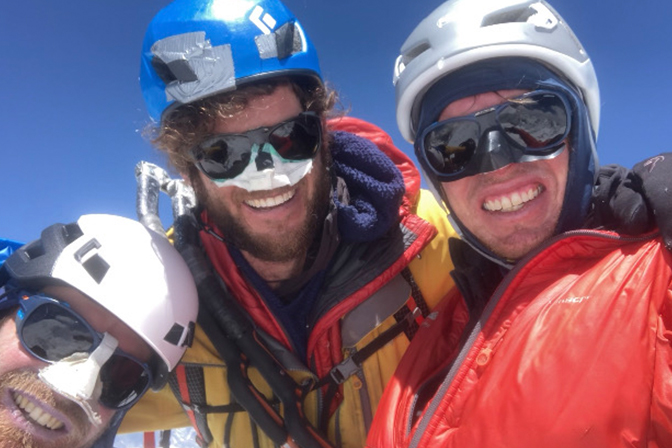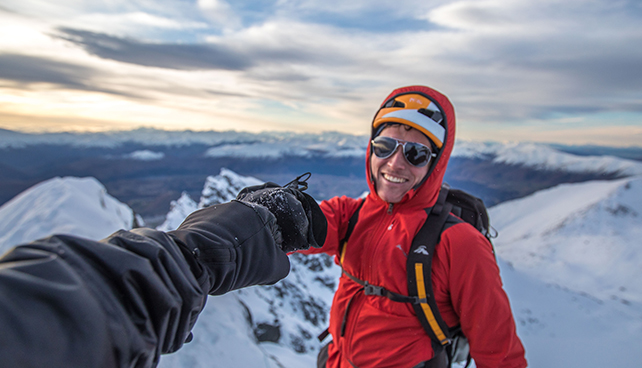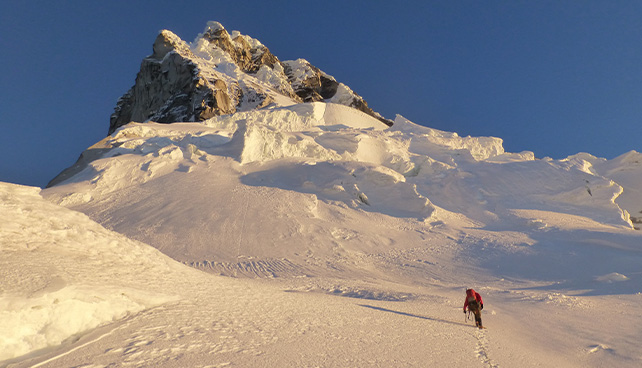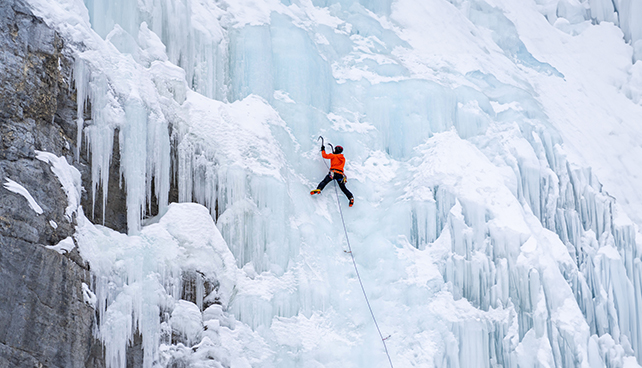
In the Himalayas, India is home to iconic peaks marvelled by mountaineers and alpinists. Changabang, 6880 metres, is one of them. The western side was the scene of an epic climb in 1976 by the Boardman-Tasker british team. 46 years later, their route was repeated by Daniel, Kim and Matt of the New Zealand Alpine Team. Daniel writes about the experience.
It’s been hard to figure out exactly what to say about our ascent.
This is despite the fact that after forty-six years we made the first repeat of the famous Boardman Tasker route, a route with such a weight of history surrounding it. Peter Boardman and Joe Tasker were the shining lights of British mountaineering in the 1970’s and their climb has attained legendary status. Chris Bonnington commented before they left “It’s a preposterous plan. Still, if you do get up, I think it’ll be the hardest thing that’s been done in the Himalayas.”
Their audacious ascent took them 25 days and their use of big wall techniques on a Himalayan face was revolutionary.
Did we want to reach those dizzying heights? Discover an almost transcendental high? No, not even close, coming home is always more important than completing the climb. To be in the right mindset I had said my goodbyes to family and friends before leaving to get in the zone to perform on a route like this. Prior to the trip we promised each other there would be no epics on our expedition. We were going with plenty of gear food and clothing. Whether it was success or failure, the ascent would be smooth and safe.
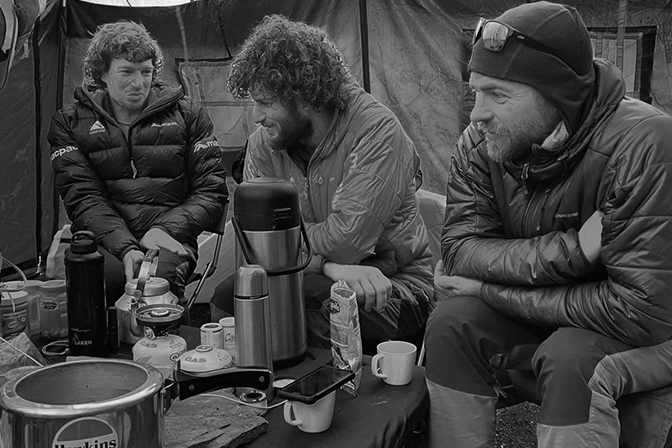
Two years ago when I first proposed an ascent of Changabang, Matt who would have preferred to go on an 8000m peak summed it up when he said, “Well, Kim and you are my climbing partners for life, so if you’re going then I’m going.”
Simple.
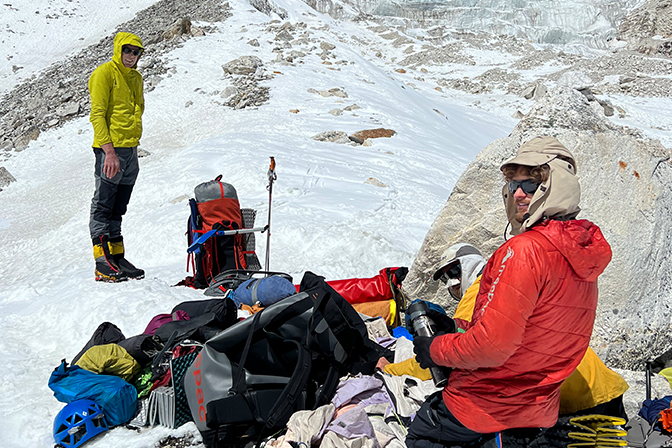
When we analysed why the twenty odd attempts on Changabang’s West Face failed, the best answer we came up with was, they failed due to poor planning and logistics.
Plenty of good technical climbers had tried the route, but we doubted it would be the difficulty of the climbing that would stop us. Weather, the extreme cold, poor acclimatisation strategy, low morale, load carrying fatigue from base camp to the start of the climbing and animals eating your food. These were things we hoped to avoid by having a solid plan for the expedition and the ascent.
The approach to Changabang from Base Camp (BC) was our first taste of the pain and effort to come. It's nearly 10 kilometres of moraine travel from BC to the foot of the mountain, most of which is above 5000m. We had approximately 180 kilograms of equipment and food to take to Advance Base Camp (ABC). Which was enough for ten days on the wall and five to seven days at ABC. This meant around three load carries up and down the glacier.
We went prepared for the worst case scenario and hoped for the best. Our triple rack of cams, full aid climbing gear, spare rope, large piton rack and several sets of wires along with fifteen cans of cooking gas and ten days food made for a heavy haul bag. We knew this could be difficult to haul over broken loose terrain, but both Kim and Matt have a wealth of big wall climbing experience and all obstacles were overcome with relative ease. In the book, The Shining Mountain, Peter Boardman describes a wall devoid of good bivvy spots. We therefore chose to take two portaledges and a tent.
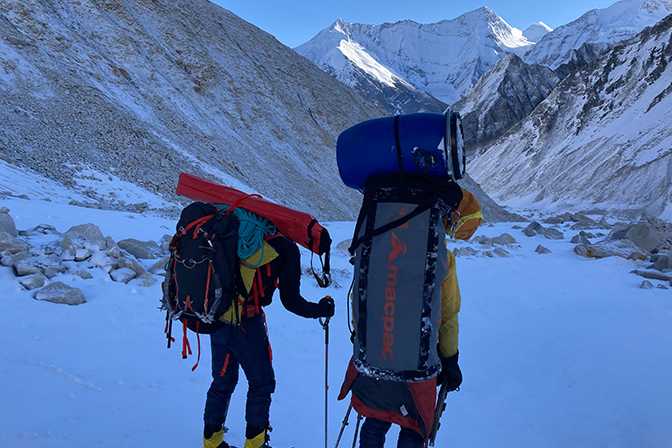
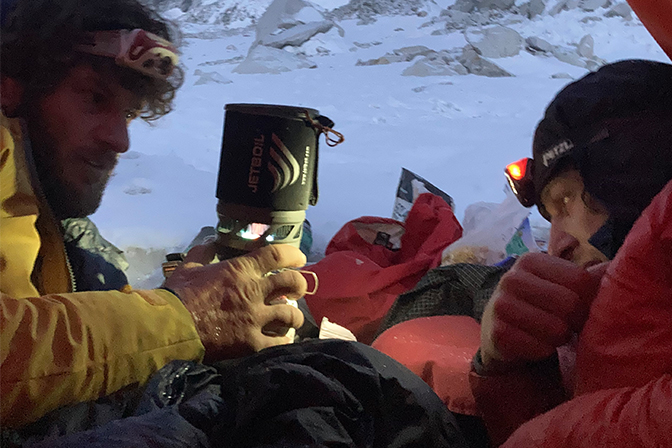
Daily afternoon storms and the West Facing aspect made for a suffer fest. The moments of warmth and pleasure were few and far between. Our shared commitment to each other and our egos drove us forward, there was little else to keep us going.
I doubt we had morning temperatures above -20˚, and on several days it was easily nudging -30˚. Morning wind added another layer to the suffering and daily afternoon snowstorms. We had a few minor dramas, all of us came off the mountain with some degree of frost damage on our fingers and toes, during one night Kim’s portaledge frame snapped and he was left hanging in a sagging mess, and on the final bivvy our tent started to slide off the small platform we had created on the edge of a 1000m drop. Little pleasure, lots of suffering.
“F**k it’s cold!”. When climbing on the West Face of Changabang I think I said that on several occasions. I can honestly say that I had the coldest hardest days of my mountain climbing career on that face. It wasn’t the difficulty of the movement that made it hard, it was the cold. At the time it appeared pointless. We were a long way from the summit and the top of the mountain seemed unreachable at our slow measured pace.
The only way to cope was to focus on one day at a time. During the load carries we never thought of what came next. Every carry was hard. We focused on that day and said as long as we get the gear to where we planned, tomorrow is a new day. We reminded each other not to think too far ahead. None of us thought we would summit. We never imagined it could be possible until the final one hundred metres. Every day we simply did our pitches and moved our gear, never thinking how far we had to go, just the objective for the day. We knew that on an ascent and descent where you have planned for ten days there is no point worrying about what is to come. The sheer amount of effort required on a route like the West Face can wear you down mentally if you worry about the future.
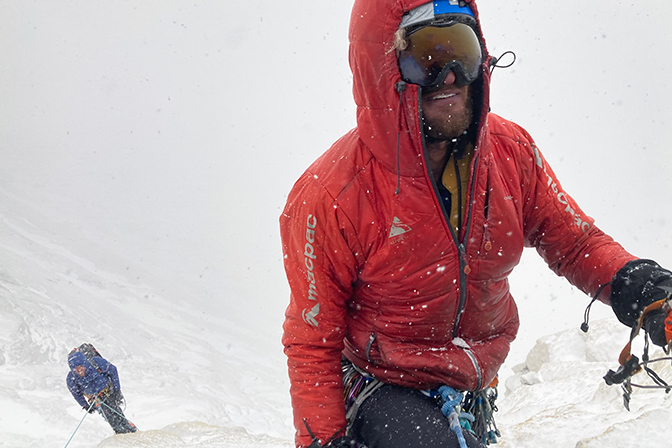
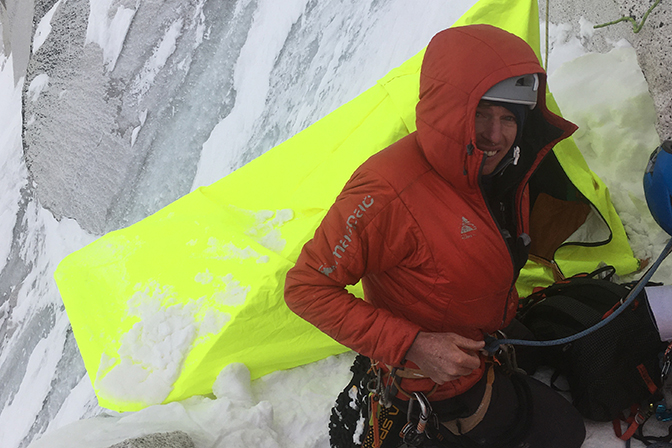
We were leading one day each in rotation and it was paramount for each of us not to fail the others on our allocated day. This placed a lot of pressure on you when your turn came around, but it also acted as a great motivator, as you knew the others had suffered equally. As luck would have it we seemed to get the right day for our various skill sets when the time came. No one failed on their day. Our team functioned well with one person in charge of setting up camp each day and melting snow for drinking, while the other two pushed our ropes and gear higher up the wall. For this kind of route a three person team is efficient, with one person leading, another hauling the bag, the third person cleaning gear and helping when the haul bag gets stuck. Sometimes the leader would set out on self-belay while the other two dealt with the haul bag or set up camp. We were busy from the moment we woke till the time the portaledge door was zipped up and we fell asleep.
It was Matt’s day to lead as we climbed to the summit. He is the strongest of us at altitude and it was fitting that the last pitches of the climb would fall to him. We had been expecting to be able to unrope and walk the final ridge to the summit. The route though remained steep and sustained right to the final pitch. I followed the last lead side by side with Kim, I could feel the emotion and tension of the last weeks and months starting to well up. On the summit, all three of us embraced, tears flowed freely. An ever-expanding view greeted us. Not quite as far as Tibet, but we did manage to see the famous Nanda Devi in all its glory. We had given our best for each other and the route. It was a real relief that we could finally begin to abseil down the same way we had come up and make the first steps towards Base Camp, warmth and safety.
